
By SERGEY KADINSKY
Forgotten NY correspondent
THE northwestern tip of New York City offers majestic views of the Hudson River and the Palisades. The Sisters of Charity have their convent here, on the campus of the College of Mount Saint Vincent. Its history began in 1847 when celebrated Shakespearean actor Edwin Forrest purchased it and built a Gothic Revival castle here. He named it Fonthill, perhaps in honor of the Fonthill Abbey in England. The dwelling was completed in 1852, but Forrest never lived in it. Suspecting his wife Catherine Sinclair of infidelity, he filed for divorce, she countersued and secured a generous alimony. He then looked to sell Fonthill. Even in those days, celebrity actors had marital problems.
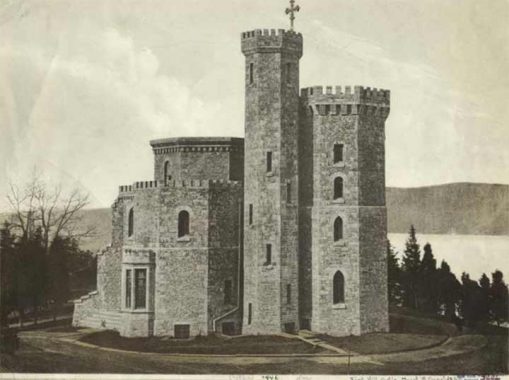
The Sisters of Charity bought the 55-acre estate after being displaced from their initial location in Central Park, and the Academy of Mount Saint Vincent went uptown with them. The residential castle received a cross in 1857 and served as a consent, chapel, library and admissions office. This castle was among the earliest buildings in the Bronx to be landmarked by the city.
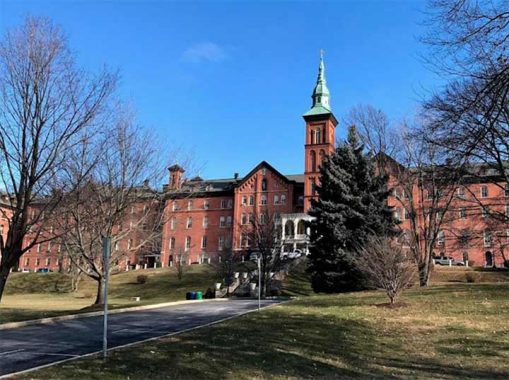
In their first decade on this site, the sisters commissioned Founders Hall which stands next to the Fonthill castle. This Romanesque Revival structure was completed in 1859 and expanded in 1865, 1883, 1906-1908, and in 1951. The two buildings are landmarked by the city and appear in the National Register of Historic Places.
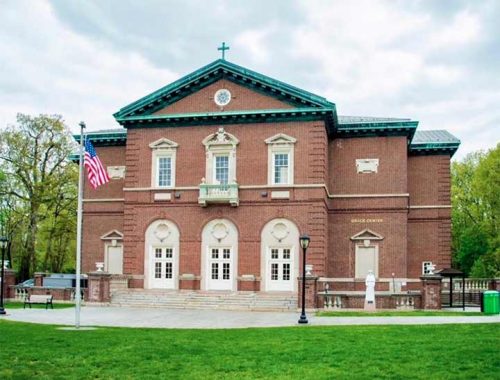
Grace Center can be descriptive, but it is also in honor of Margaret and Peter Grace, longstanding supporters of the college. This building serves as the lecture hall, which in turn is named for Cardinal Patrick Joseph Hayes, who served as the Archbishop of New York from 1919 to 1938. During his tenure, he opposed the prohibition on alcohol, abortion, contraceptives, and divorce. He supported Irish independence, unemployment relief, and defended Catholic schools.
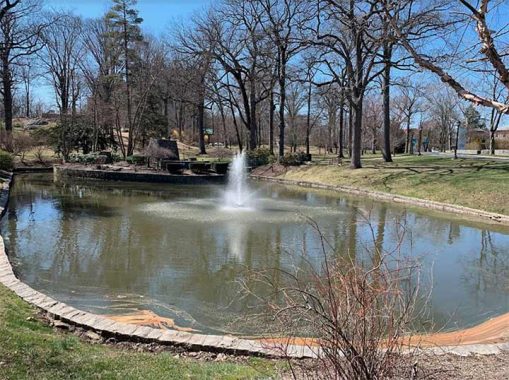
The campus has its own waterway, which I documented on the Hidden Waters Blog. Forrest used this pond as a habitat for his goldfish. In 1874, the nuns installed a shrine to Saint Mary on a constructed isle in its center, with a footbridge for access. At this point a security guard approached me. “Can I help you?” I politely declined, and told him that I was there to see the shrine. He then told me to leave the campus.
“Can I help you, sir” most often means “GTF out of here.” — Ed.

The main entrance to the campus is at Riverdale Avenue and West 263rd Street, the highest numbered street on the Bronx/Manhattan grid. The gatehouse matches the architecture of other campus buildings. The apartments behind it are across the city line in Yonkers, the neighboring city to the north of the Bronx.
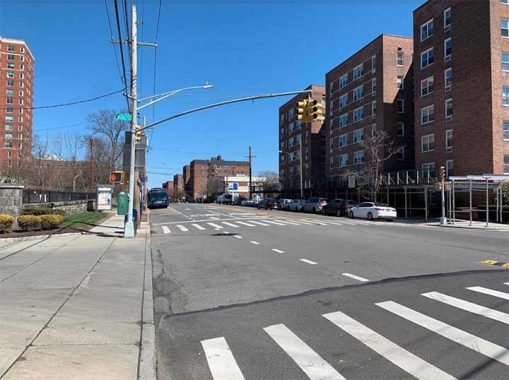
Looking north is 6300 Riverdale Avenue, the last apartment building in the city before the road enters Yonkers, continuing for a mile and a half to that city’s downtown.
Having published detailed essays on the campuses of St. John’s University, Hunter College, Queensborough Community College, Kingsborough Community College, York College, SUNY Maritime, and a tour of my alma mater CCNY, I was disappointed that I couldn’t do the same at the College of Mount Saint Vincent.
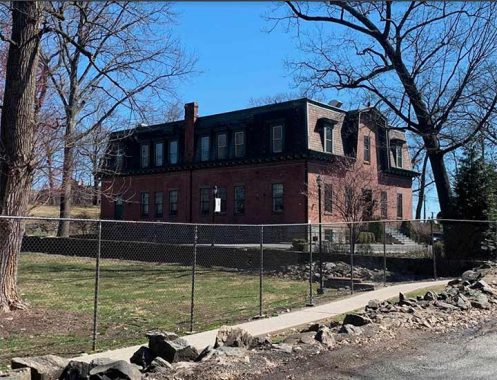
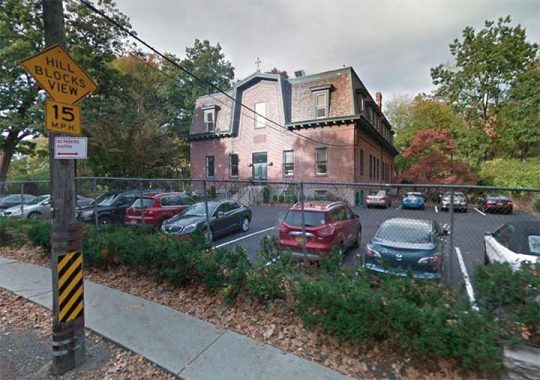
I did the next best thing by walking the perimeter of the property on West 261st Street. Le Gras Hall serves as the residence for the nuns. Built in 1876, it used to host classes. The mansard roof is a nod to its French namesake, St. Louise de Marillac (Louise Le Gras, August 12, 1591–March 15, 1660) who was guided by St. Vincent de Paul, the namesake of this college. Together they founded the Daughters of Charity in Paris. Like the early American saint, Elizabeth Seton, she was a widow from a wealthy family who felt a calling to minister and founded the New York branch of the Sisters of Charity.
The historic villa is among the older buildings on campus, a designated city landmark. In those early years this house hosted St. Aloysius Academy for Boys, for boys from poor families. Among its alumni is playwright Eugene O’Neill, who shared his memories of the campus in his 1956 work Long Day’s Journey Into Night. In 1910, the academy was chartered as a women’s college. It opened to men in 1974.
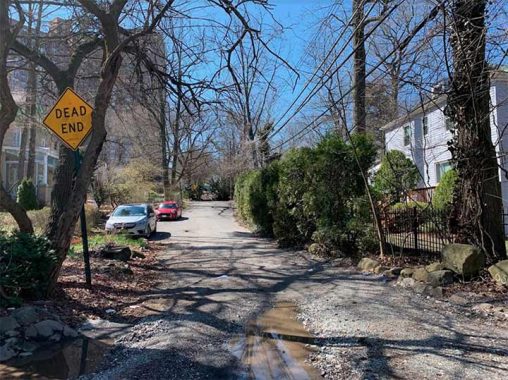
Across the street from this house is the northern end of Independence Avenue, which runs in four segments from here to Spuyten Duyvil, ranging in width from a dead-end driveway to four lanes. The northernmost segment also has the northernmost step street (a set of wooden planks) in the borough that has the largest number of stepped streets.
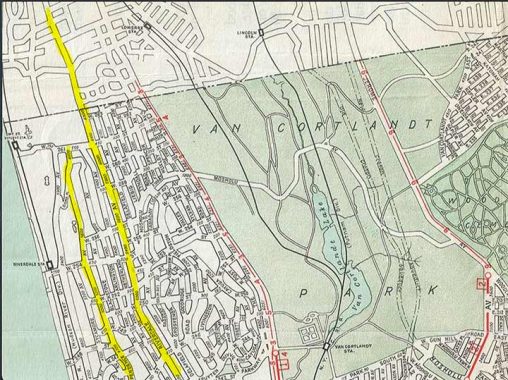
This Hagstrom map from 1922 shows Independence Avenue running uninterrupted through Riverdale, but in reality some property owners stood in the way, resulting in its segmentation. Among them is the Monastery of the Visitation, known today as the Saint John Vianney Clergy Residence, a home for retired priests. Also highlighted here is Riverdale Avenue, which also runs from north to south. The portion between W. 239th and W. 252nd streets was absorbed into the Henry Hudson Parkway in 1934.
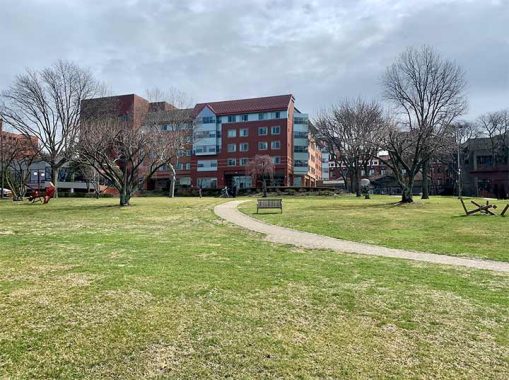
West 261st Street sharply turns south and becomes Palisade Avenue, which parallels the Hudson River. Amid the mansions is RiverSpring Living, a complex of apartments for seniors surrounded by a sloping lawn containing dozens of sculptures. The oldest building here is the Hebrew Home, which opened here in 1951. More than 500 residents live at the Hebrew Home, with thousands more as clients of its programs and services.
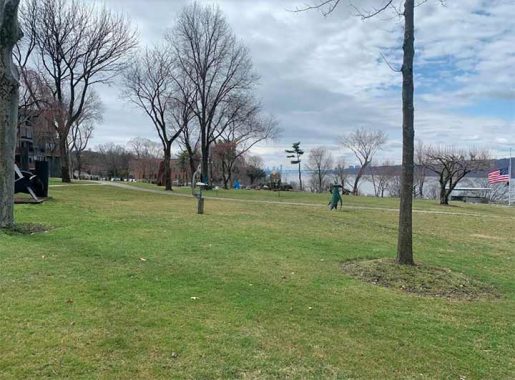
On the lawn, the beauty of the sculptures is exceeded only by the view of the Hudson River, looking south towards Manhattan. It is a reminder that one does not have to travel north to Tarrytown or Hyde Park to have the experience of the Hudson Valley region. Within the city, The Cloisters, Inwood Hill Park, and Wave Hill are among the other examples of historical high points along the river that are open to the public. Plenty of private mansions on sizable properties too.
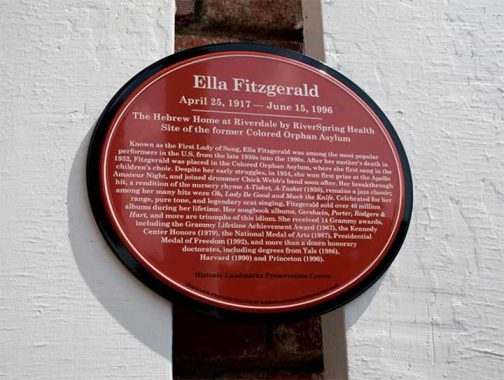
Prior to the Hebrew Home, this site was the Colored Orphan Asylum, which had its start downtown in the early 19th century. Like many of the city’s sizable colleges and institutions, it moved uptown as urbanization crept northward. Its first location was in Midtown, followed by Hamilton Heights, and then Riverdale. Its most famous resident was singer Ella Fitzgerald, memorialized here with a plaque. The nonprofit that ran this asylum is today known as Harlem Dowling-West Side Center.

The main building of the Colored Orphan Asylum was absorbed into the Hebrew Home complex, identifiable by its dormer windows. In front of it is the Joan & Sanford Weill Pavilion, which tries to match the appearance of the older building. Mr. Weill is a former CEO of Citigroup, a generous supporter of the Hebrew Home.
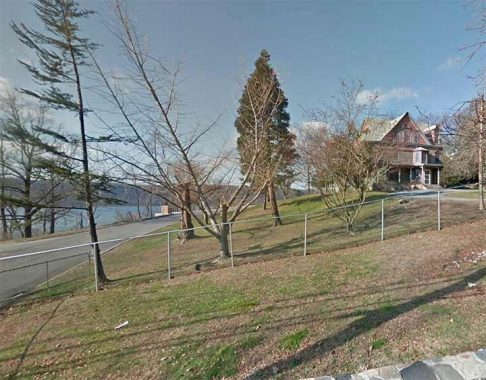
To the south of the RiverSpring Living is the former Passionists Fathers retreat, which was sold to the Jewish Home in 2011. There are plans to build more apartments for seniors on this site, while preserving the historic Claflin mansion on the property.


The Hebrew Home itself had its origins in Manhattan, originating in Harlem in 1917, when that neighborhood had a Jewish community. As senior residences are concerned, the Jewish Home has a long history of innovation designed to make the lives of the elderly more fulfilling. Founded in 1982, the Derfner Judaica Museum is an outgrowth of the art program at the Hebrew Home, launched in partnership with The Jewish Museum. As its collection grew, it became a separate institution. Best of all, it is free of charge to see the artworks, artifacts, and photographs relating to Jewish life, the largest such collection in the Bronx.
|
|
|
|
|
|
|
|

My personal favorite sculpture here is Leonard Ursachi’s 2007 work Hiding Place, consisting of willow branches treated with oil. It reminds me of the sukkah, a temporary tent used in the Feast of the Tabernacles.
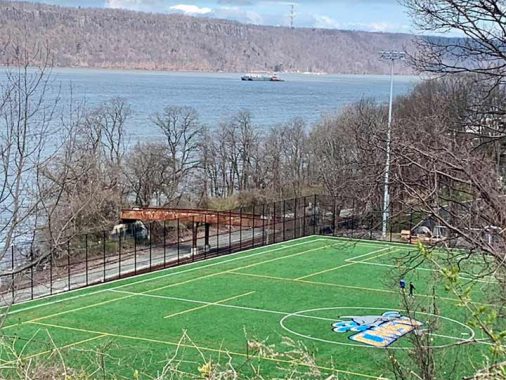
Looking north from the sculpture garden is the athletic field of the College of Mount Saint Vincent, with its dolphin mascot. The footbridge across the tracks marks the site of the Mount Saint Vincent train station that brought students and visitors directly to the campus. Low ridership and security concerns resulted in its closing on June 3, 1974. Kevin documented the active stations on Metro North’s Hudson line within the city back in 2020. The tower rising above the Palisades is the Armstrong Tower, used for radio transmission.
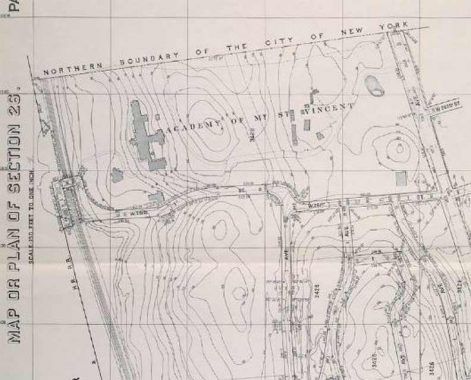
A topographical map from 1890 shows West 261st Street connecting to this station, indicating that it served not only the college, but also its neighbors.

A map from 1921 shows a bathhouse on the point next to the station. It was a time when swimming in the Hudson River was considered safe. There is also a cemetery within the campus which I did not get to see. Such questions beckon me to return to this campus at the next possible opportunity. I did not expect to see so much Catholic and Jewish history in this corner of the city. What the two faiths have in common is their desire for a quiet neighborhood where their followers can commune with God.
Sergey Kadinsky is the author of Hidden Waters of New York City: A History and Guide to 101 Forgotten Lakes, Ponds, Creeks, and Streams in the Five Boroughs (2016, Countryman Press), adjunct history professor at Touro University and the webmaster of Hidden Waters Blog.
As always, “comment…as you see fit.” I earn a small payment when you click on any ad on the site.
4/2/23

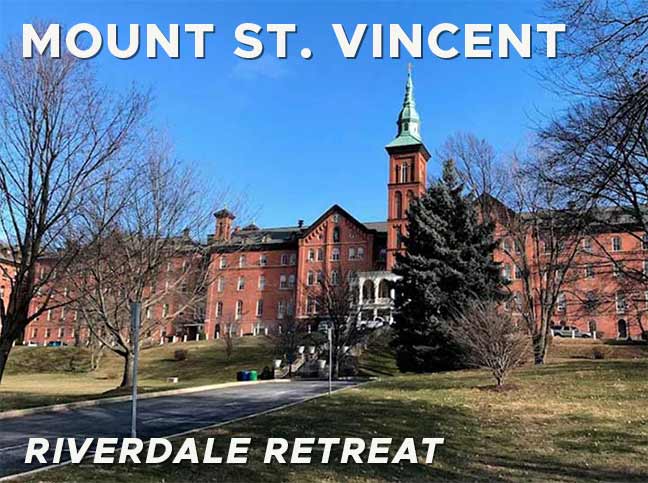
13 comments
One original but later show incorrect theory about the recent murders at the University of Idaho is that the suspect first took notice of one or more of the victims while in the student center. Turns out that anyone can just go into the Idaho student center, at least during the day, without having to have a student ID card and even if they look beyond student age. Quite a contrast to New York, with its closed-off campuses.
I’ll take Idaho’s non-paranoid approach any day.
Given recent events, I think added security is wise, even if I don’t like it when trying to acquire photos. There should be a way to procure access beforehand by appointment and a background check.
At least it’s unlikely that Columbia will close its campus, as it’s quite a tourist attraction. And of course NYU can’t, what with all the public streets.
That Netflix show “You” makes stalking look so easy. Kevin and I enjoy stalking historic buildings.
I watched the first season and was so put off by the evil protagonist I gave up on it.
In addition to “Can I help you?”, another favorite is “Are you OK?”
Serge, since you were chased from the Mt St Vincent property, why not attempt to go through official channels to go back there and do another FNY page, and do the same with the Jewish neighbors, so you won’t be asked if you need any help, lol
The Hebrew Home’s security guards welcomed me after I told them that I wanted to see the museum and sculptures. In hindsight, I could have arranged in advance my visit to Mount Saint Vincent.
Wonderful Bronx history!
Of interest on the bottom of that 1921 map . ” Colored Orphan Asylum ” ? Looks like a facility that needs further investigation..
Discussed…. in the piece.
I heard that some don’t even consider Riverdale as part of The Bronx and is sometimes given its own mailing address when it comes to postal services.
Thank you for sharing this valuable resource that allows us to discover and appreciate the beauty of Riverdale’s Mount St. Vincent.